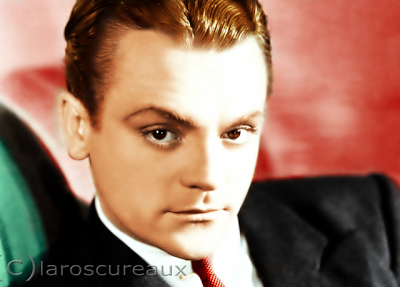
Cagney, color by Claroscureaux
"...every time I see him work, looks to me like a bunch of firecrackers going off all at once."
Will Rogers
During an era when impressionists, those performers whose gift it is to mimic the very famous, were a staple on television, Cagney was an essential in every repertoire. Cagney. An electric and singular presence, he is among the handful of Hollywood legends instantly identifiable by just one name. His film career began in 1930 and came to an end in 1981, but he is as revered by film buffs today as he was treasured by audiences throughout his active years. This tribute is my contribution to The Movie Projector's Cagney Blogathon. Click here for links to participating blogs.
James Francis Cagney came into the world in July 1899, the second of seven children, two of whom died in infancy, born to Irish-American James and Carrie Cagney on New York's Lower East Side. The elder James Cagney was a bookkeeper-turned-bartender, a charmer and a drinker who liked to play the horses and didn't hold many steady jobs. His titian-haired wife was a gritty matriarch, the linchpin who held the Cagney clan together and inspired her children to succeed. James died at age 41 in the devastating Spanish flu pandemic of 1918. Not long after, Carrie gave birth to their only surviving daughter, Jeanne. The four Cagney boys were used to working at odd jobs and contributing to the household "kitty," but now the family's survival depended on them.
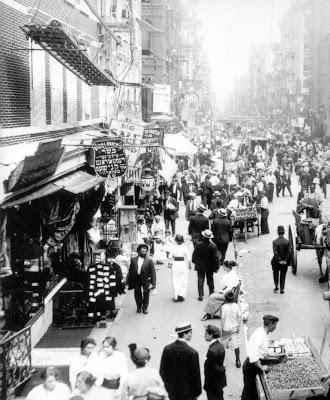
The Lower East Side, early 20th Century
Jim, known in the neighborhood as "Red," took his first regular part-time job at 14 as a copyboy with the New York Sun. At 15, with his brothers Harry and Ed, he worked part-time for the New York Public Library. But he always had other small jobs on the side so he could better "feed the kitty." He never joined a neighborhood gang, but he was a street fighter, a tenacious one, and was good enough that he began training to become a pro. His mother, a staunch believer in education as the only sensible way out of poverty, put a stop to this plan the moment he mentioned it to her.
Through the years, Carrie regularly sent her boys to neighborhood settlement houses for lectures and classes. Jim developed an interest in ecology through a talk he'd attended; this passion remained with him all his life. When oldest brother Harry was studying to become a doctor, Carrie decided it would be a good idea for him to learn something about public speaking and persuaded him to join the dramatics club at the Lenox Hill Settlement House. When Harry became ill just before a performance, Jim stepped in for him. It was his first turn as an actor. He relished the approval of the audience and later recalled that 'little Jim' suddenly didn't feel quite so little.
Cagney had learned a popular dance called The Peabody at Lenox Hill and when a friend tipped him to an opening for a dancer at $35 a week in vaudeville, he took what he knew of dancing to the audition and was hired. The show was called Every Sailor and, to young Cagney's surprise, he would be performing in a dress. He later wrote, "And that is how I began to learn dancing - as a chorus girl." A quick study, he watched the other dancers and practiced what he saw. After the revue closed he toiled briefly as a runner for a Wall Street brokerage house and was grateful when he got a job as a chorus boy in the 1920 musical Pitter Patter. Eventually he was offered a spot as a specialty dancer in the show and for the next few years worked in vaudeville performing specialty routines. One of the acts Cagney joined for a time was a "3-act" known as Park, Rand & Leach. He took the place of Archie Leach (later Cary Grant) who was moving on. Park, Rand & Cagney didn't last long either.
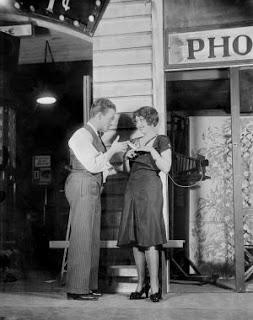
Cagney and Joan Blondell onstage, Penny Arcade
In 1925 Cagney won the role of "Little Red," one of two leads in Maxwell Anderson's new drama, Outside Looking In. The play co-starred Charles Bickford and opened at the Greenwich Village Theatre. Receiving good reviews, the show moved uptown where it ran for four months. Of Cagney's first performance on the legitimate stage, critic Robert Benchley cited his 10-minutes of silence during a kangaroo-court scene as "something that many a more established actor might watch with profit." When Outside Looking In closed, it was back to vaudeville for Cagney, but from 1928 - 1929 he worked steadily on Broadway. Then, in early 1930 he was cast, with Joan Blondell, in a new show, Penny Arcade. Though its Broadway run ended in just three weeks, Al Jolson happened to catch it and bought the movie rights. When he sold the rights to Warner Brothers, he recommended Cagney and Blondell to Jack Warner and they were cast in their original roles. A crime story about bootlegging, murder and a frame-up, the film - re-titled Sinners' Holiday (1930) - launched Cagney's film career. A New York Times critic reviewed the film positively, observing that "the most impressive acting is done by James Cagney..."The picture that made Cagney a star was his fourth for Warners, The Public Enemy(1931). Esquire's Dwight McDonald would write that Cagney's heartless and brutal thug, Tom Powers, made Humphrey Bogart look like a "conscience-stricken Hamlet." Though the actor always regarded his Hollywood career as transitory, Cagney would never have to look back after the break-out success of The Public Enemy. He received star billing thereafter.
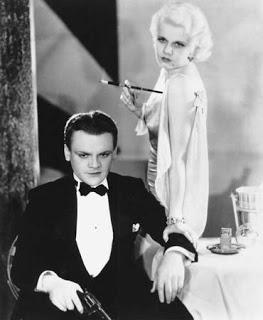
Cagney and Jean Harlow, The Public Enemy (1931)
Cagney's memories of The Public Enemy included the on-the-set hazards of making gangster films before the use of prop ammunition. Real bullets were routinely used and he had a close call in a scene involving machine-gun fire. Dodging bullets wouldn't be Cagney's only grievance with Hollywood. He'd become a headliner in less than a year, but his contract didn't mirror his popularity at the box office. Early on he vocally objected to the low pay and unholy hours the studio imposed. He called it a "factory approach." When the Screen Actors Guild was founded in 1933, Cagney joined and was elected to its board of directors. He later served a term as SAG president. With the help of his youngest brother Bill, who he had enlisted as his business manager (Harry and Ed had both become doctors), he doggedly battled Warners. Jack Warner referred to him as "the professional againster." Production head Hal Wallis called him "our house rebel."During a contentious separation from Warners in 1936, Cagney traveled east with a friend and spent time on Martha's Vineyard. Years earlier, as a boy, he had fallen in love with the countryside while visiting relatives who lived in rural New York. Now he could afford to buy a country property of his own. The Vineyard seemed the ideal location - he would own a farm surrounded by the sea. He purchased a 100-year-old farmhouse on 100 acres that was only accessible by dirt road for $7,500; annual taxes totaled just $39. Cagney's Chilmark Farm became a much-loved retreat where he could enjoy a tranquility his life in Hollywood lacked. The stand-offish Vineyard locals came to know and admire him and would call him, with sincerity, a good neighbor.
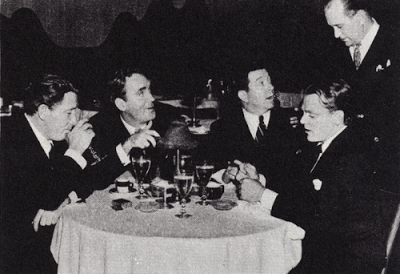
Irish Mafia, l -r, seated: Tracy, O'Brien, McHugh, Cagney; standing: Overman
In Hollywood, Cagney concocted another form of respite. With a close-knit band of actor friends, he started The Boys Club. An industry columnist nicknamed the informal group "The Irish Mafia." Its core members were Cagney, Pat O'Brien, Frank McHugh, Spencer Tracy, Lynne Overman, Ralph Bellamy and Frank Morgan. They sometimes talked shop but, according to McHugh, their nights out were more concerned with stimulating conversation and laughs than the movie business.Cagney began work on Angels with Dirty Faces (1938) after his latest problems with Warners had been ironed out. For this film, a crime thriller about childhood friends whose lives go in different directions, the studio afforded a generous budget. A tenement set covered four city blocks and street scenes included authentic push carts and hurdy-gurdies. Even Cagney was impressed, "...when the studio put its heart into doing a thing, they went all the way." This time out Cagney refused to work with live bullets. Though director Michael Curtiz assured him he was safe, the actor insisted on a process shot for a shoot-out scene. It was a good thing he stood his ground. The machine-gun fire, supplied by the same gunner who had worked on The Public Enemy, hit precisely where Cagney would've been standing in the shot.
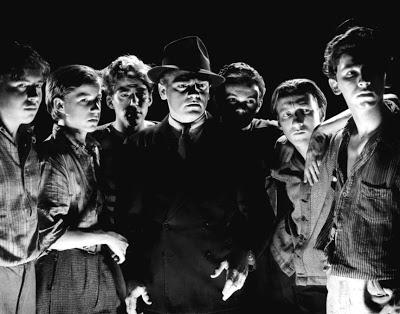
Angels with Dirty Faces (1938), Cagney surrounded by The Dead End Kids
For the role of archetypal gangster Rocky Sullivan, Cagney based his portrayal in part on a local character he'd seen on the streets as a kid. He was "a hophead and a pimp" who stood on a corner all day, hitching up his pants, pulling at his necktie, moving his shoulders, snapping his fingers and smacking his hands together. The mannerisms with which Cagney endowed Sullivan would provide the material for a legion of impressionists years later. An exact replica of Sing Sing's death cell and corridor to the electric chair were created for the film. As Rocky Sullivan walked from the cell to his fate, James Cagney was thinking of the neighborhood boy he knew best in his youth, Peter Hessling, known as "Bootah." In his autobiography, the actor wrote he would always remember July 21, 1927. On that night he was performing on Broadway, Jack Dempsey KO'ed Jack Sharkey, and Bootah went to the electric chair at Sing Sing. "I wept when I heard about him," he recalled. The irony that art was imitating his life - with a twist - in Angels with Dirty Faces was not lost on him. Cagney received his first Best Actor nomination from the Academy for his performance and was named Best Actor by the New York Film Critics Circle.

Cagney's Chilmark property, Martha's Vineyard, photo by David Welch
By the time he marked his first decade in Hollywood, Cagney was on his way to becoming a wealthy man. Not only did he have a more lucrative deal with Warners, but he had also begun buying real estate. His properties would include a small island at the tip of Southern California's Balboa Island, acreage in the desert town of Twentynine Palms, California, his home on 10 acres in Beverly Hills, the Martha's Vineyard estate, a farm in Northridge, California, and the vast Verney Farm in Dutchess County, New York. Also at this time, his entire family - mother, sister and all three brothers - relocated to Los Angeles. His wife, Willie (aka/"my Bill"), a dancer he'd met on Pitter Patter in 1920 and married in 1922, didn't mix with the Cagney clan, but Jim was nevertheless thrilled to have everyone close at hand. In 1940 Jim and Willie adopted a son, Jim, Jr., and in 1941 they adopted a baby girl known as Casey.
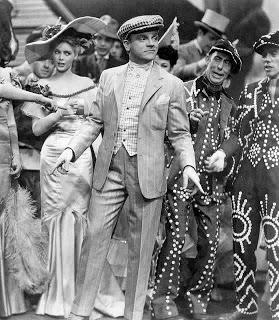
Yankee Doodle Dandy (1942)
Because of his ongoing disputes with Warner Brothers and his progressive politics, Cagney had been tagged a "radical." The Dies Committee (1938 - 1944) was the first incarnation of HUAC and in 1940 when the LA County District Attorney named Cagney as a person with an interest in the Communist Party, the actor met the accusation head-on. First he called a press conference and passionately denied the charge. Next he met with Rep. Martin Dies, head of the Congressional committee, and stated his case in person. Dies effectively put the matter to rest. Yankee Doodle Dandy (1942) began making its way toward production soon afterward. The role of Broadway's legendary and multifaceted George M. Cohan was a perfect fit for Cagney, who said of himself, "once a song-and -dance man, always a song-and-dance man" and neatly described his own style as "flash, with always a dash of the eccentric and a bit of humor." The film lifted his career to another peak; his performance earned him an Academy Award and his second Best Actor award from the New York Film Critics. Yankee Doodle Dandy, released in the early days of World War II, also cemented his reputation as a good and patriotic American.On behalf of the war effort, Cagney took part in many war bond drives, traveled with the USO and gave the U.S. Army access to his Vineyard property for use in its maneuvers. Also during the war years, Jim and his brother Bill established Cagney Productions. The company produced three features before it was absorbed into Warner Brothers as a production unit.
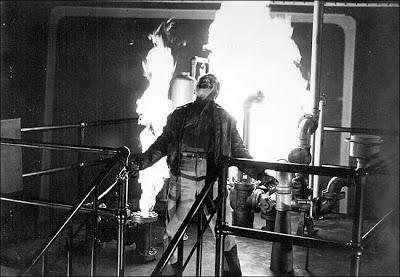
White Heat (1949)
John McCabe's 1997 biography, Cagney, opens with a disturbing domestic scene. Young Jim sits in the kitchen closely watching his father across the dining table. The elder Cagney starts rocking from side to side and then begins a "low keening" that will build to a wail. These episodes were called "Dad's fits" and would portend Cagney's Cody Jarrett in White Heat (1949). The actor considered it "a good picture in a number of ways." The original script had been typical formula, what he called "the old knock-down-drag-'em-out," so, as he he often did, he set about making improvements. He suggested to the writers that the story be modeled on Ma Barker and her boys and that Jarrett be psychotic. This, Cagney reasoned, would be a natural set-up to his character's climactic demise. It was also his notion that Jarrett be a mama's boy and proposed a scene with Cody sitting on his mother's lap. "Let's see if we can get away with this," he said to director Raoul Walsh. They did. Virginia Mayo, who played Cagney's mistress, remembered of working with him that, "he always gave to you more than you gave to him" and was astonished that he wasn't Oscar-nominated for his performance.

Doris Day and Cagney, Love Me or Leave Me (1955)
Cagney would receive his final Academy Award nomination for Love Me or Leave Me (1955), the film that revealed Doris Day's dramatic potential, and most of his later film performances were well received. The making of Billy Wilder's One, Two, Three (1961) was a frustrating, unhappy experience for Cagney and during filming he decided to retire when the picture wrapped. For the next 20 years he would spend most of his time on his working farm in New York and on Martha's Vineyard. His cherished pastimes included raising Morgan horses, sailing and painting.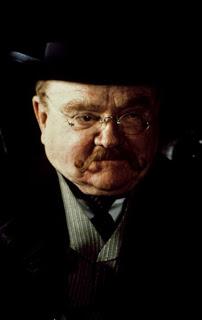
Ragtime (1981)
In 1974 he became the first actor to receive the American Film Institute's Lifetime Achievement Award. He was accorded Kennedy Center honors in 1980, and in 1981 returned to the screen for a high-profile cameo role in Ragtime, Milos Forman's film adaptation of E. L. Doctorow's best-seller. In 1984 he was awarded the Presidential Medal of Freedom.Of Cagney, Orson Welles said, "He always played right at the top of his bent, but he was always true. Sure, acting can be too broad. Broad is wide - spread out. Cagney was focused. Christ, like a laser beam! Cagney was one of the biggest actors in the whole history of the screen. Force, style, truth, and control - he had everything. He pulled no punches. God, how he projected! And yet nobody could call Cagney a ham. He didn't bother about reducing himself to fit the scale of the camera; he was much too busy doing his job."
Elia Kazan, who'd had a small role in City for Conquest (1940), recalled Cagney as "a completely honest actor." Kazan erroneously assumed that Cagney had fully worked out his performance in advance, at home, and marveled that "what he did always seemed spontaneous."
Late in life Cagney looked back on working with a young actor who went through intense preparation before every scene. When a scene had to be re-shot, Cagney viewed the second take. "There I realized what the difficulty was...he was doing it for himself, not the audience. He was psyching himself up to be the character, instead of just understanding the character and playing it for the audience." Cagney's philosophy on acting was simply stated and often quoted, "You walk in, plant yourself squarely on both feet, look the other fella in the eye and tell the truth." Those who worked with him would doubtless agree that is exactly what he did.
James Cagney died at Verney Farm in 1986 at age 86. His pallbearers included a former heavyweight champion (Floyd Patterson), a ballet legend (Mikhail Baryshnikov), an Academy Award winning film director (Milos Forman), movie producer A.C. Lyles, and one of his closest long-time friends, actor Ralph Bellamy. He was eulogized by the President of the United States and his New York Times obituary mourned the passing of the "Master of Pugnacious Grace."
CAGNEY ACCEPTING THE AFI's LIFETIME ACHIEVEMENT AWARD IN 1974
Cagney's AFI ceremony was said to be "the most star-studded gathering in Hollywood history" and that "if a bomb had been dropped on the assemblage, Hollywood would have been wiped out."

Still life paintings by James Cagney
Notes:
Cagney by Cagney by James Cagney, Doubleday (1976)
Cagney by John McCabe, Knopf (1997)


